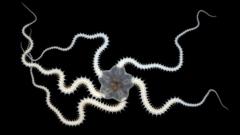Bats Catch Migratory Birds and Eat Them in Midair
NeutralScience
In a groundbreaking discovery, scientists have documented bats preying on migratory birds at high altitudes for the first time. This finding sheds light on the complex interactions within ecosystems and highlights the adaptability of bats as predators. Understanding these behaviors is crucial for wildlife conservation and helps us appreciate the intricate balance of nature.
— via World Pulse Now AI Editorial System
/https://tf-cmsv2-smithsonianmag-media.s3.amazonaws.com/filer_public/62/01/62019da1-dd28-4322-aca0-0ec598b63235/7402439760_6437bcb924_k.jpg)

